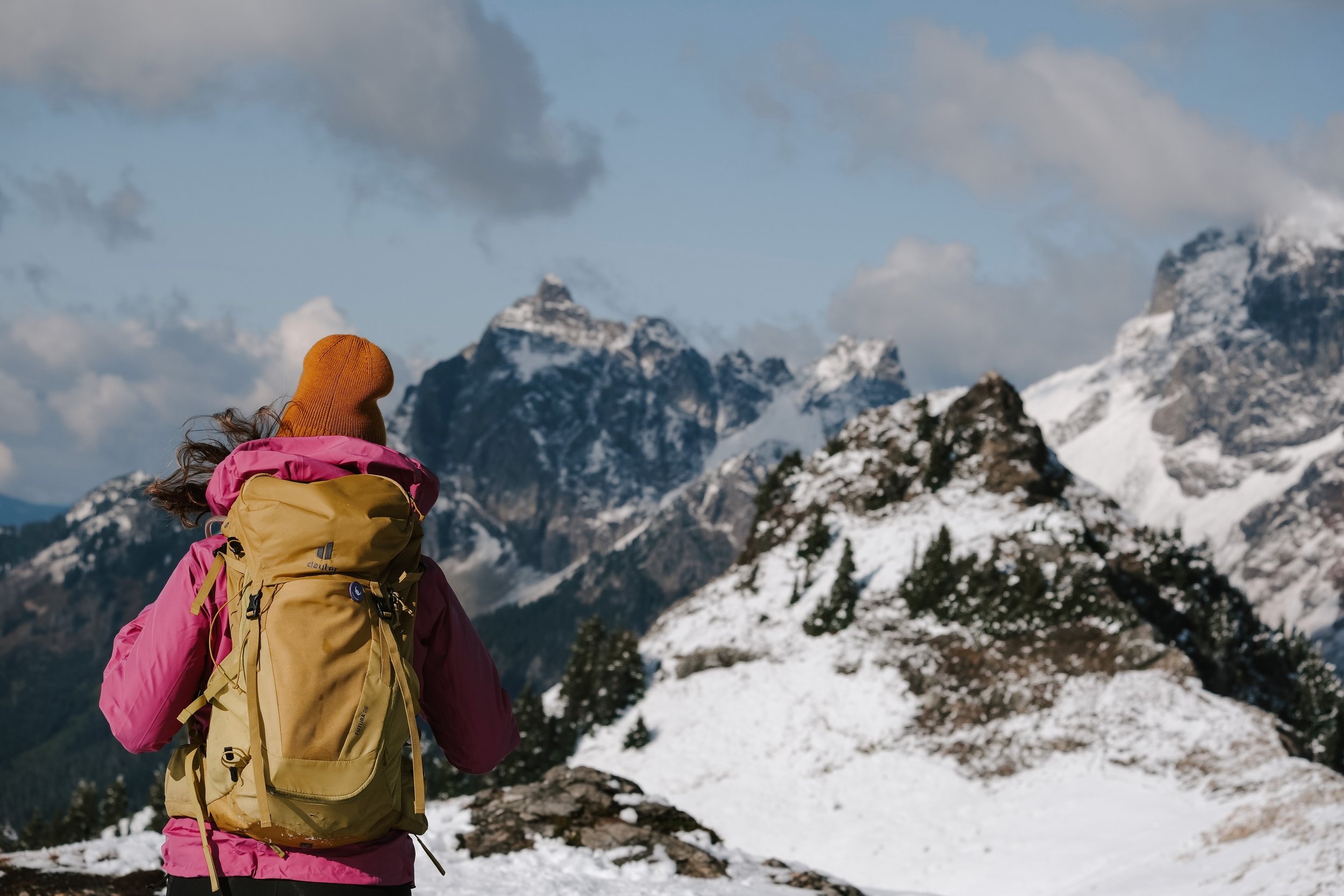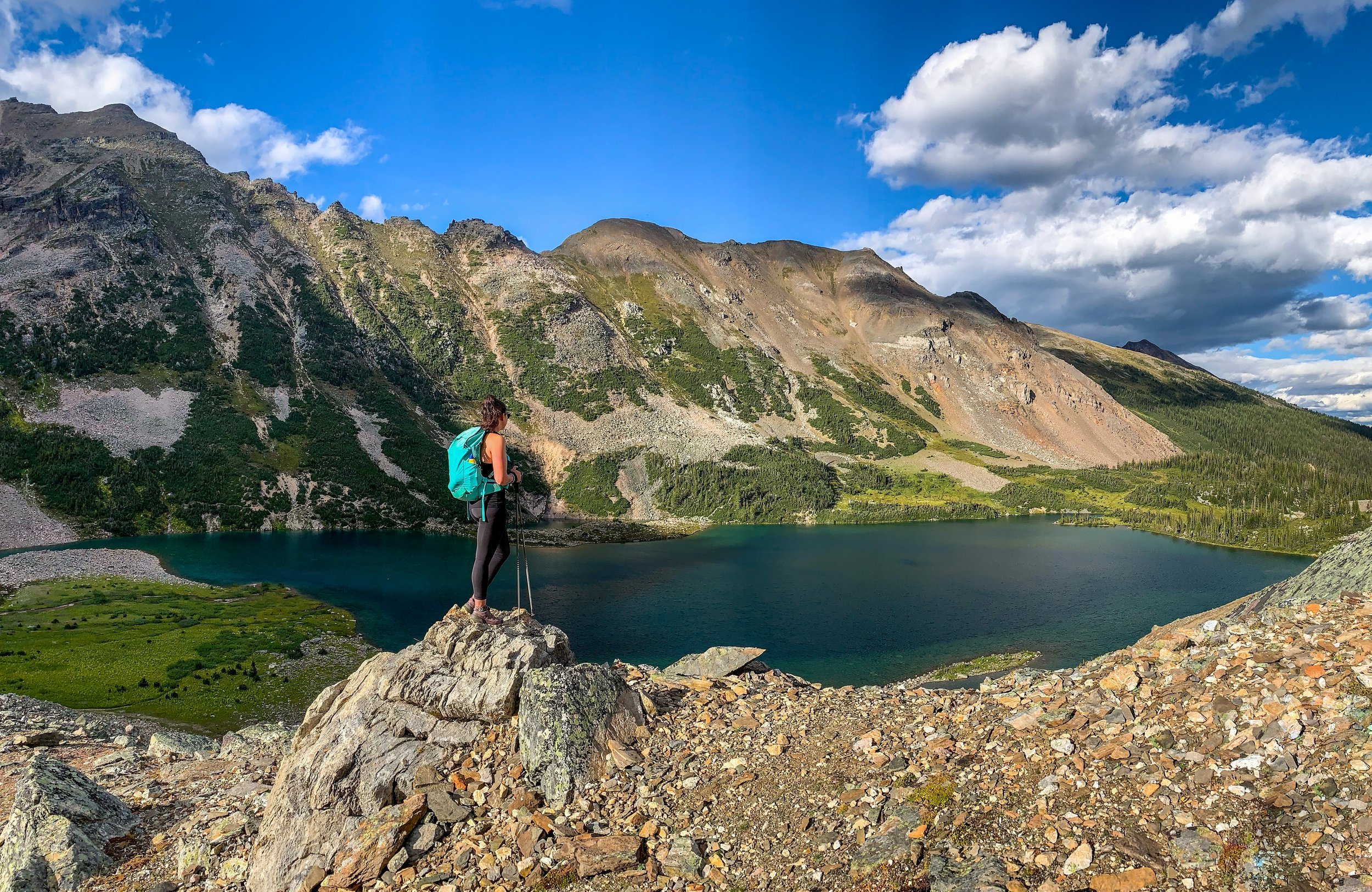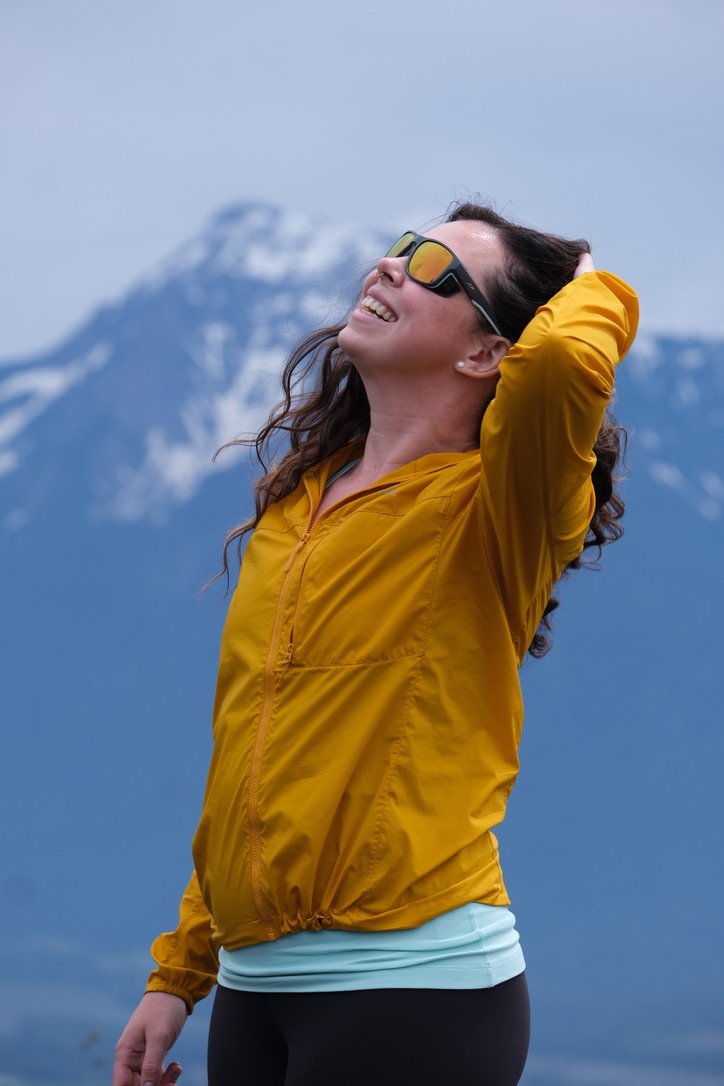Gear Guide: What to Pack for a Day Hike
Over the last few years as my love of hiking and backpacking has grown and so has my knowledge. I am by no means an expert, but I’ve spent a lot of long days in the mountains, made a lot of mistakes and learned from those mistakes.
I’ve also had the opportunity to test out a lot of gear and learn what works for me and what doesn’t. My needs have changed over time and yours will too but these are my go-to gear picks right now!
As a female I have listed my personal choices, a lot of which tend to be women specific, if there is a mens version available I have linked that as well, but keep in mind I haven’t personally tested these items.
This is a fairly comprehensive list so you may lot need all these items for every hike but it is a good baseline checklist.
Backpack (with a rain cover):
Start your packing with a sturdy and comfortable backpack that can accommodate all your gear. Look for a backpack with adjustable straps, a padded back panel, and multiple compartments for organizing your belongings.
Personally I love the Deuter Futura 26L - it’s spacious enough to fit my camera case and all my necessities for a long day in the mountains yet doesn’t look or feel big and bulky when I’m wearing it.
I love the Aircomfort System for keeping the pack raised off my back, plus the stretchy front and side pockets and integrated rain cover and hydration pack. This pack comes in a Unisex and Women’s specific version but after testing both, I opted for the Unisex version because I have a longer torso and found it more comfortable.
Trekking Poles (Optional):
Poles are definitely a personal preference, some people use em, some people don’t. For me personally, I use them almost every time and, boy do they save my knees, especially on long days, steep hills or with heavy packs.
If you have knee problems, I highly recommend using poles. I’ve tried a couple options but I’m currently using the Black Diamond Distance Carbon Z Poles and they work great.
Microspikes, Gaiters and Helmets (Optional):
These items are specific to your terrain, if you ever find yourself in the snow or on ice, I highly recommend getting yourself some mircospikes. Gaiters also come in handy in the snow and mud or when you find yourself in a scree field. And lastly helmets, helmets aren’t just to protect yourself from falling, with hiking there’s a lot of risk of overhead obstacles, people or animals above you on the trail kicking rocks or debris down. I have the Black Diamond Half Dome helmet and it’s been perfect for some of our more technical days in the mountains, lightweight and comfortable.
Clothing:
Dress in layers to prepare for changing weather conditions in the mountains. Start with a moisture-wicking base layer to keep sweat away from your skin, followed by insulating layers for warmth, and a waterproof and windproof outer layer to protect against rain and wind.
Don't forget to bring a hat, gloves, and extra socks.
Here are some of my favourite options:
Base layer: Lately I’ve been loving Vuori base layers. They’re super comfortable and look great on and off the trail!
Insulated layer: For insulation I bounce back and forth between the Arcteryx Atom Hoody and the Rab Microlight Alpine Jacket depending on how cold it is. Both are extremely packable and lightweight and keep me warm even on the coldest days.
Waterproof layer: Depending on how much rain is in the forecast I use either the Arcteryx Beta Jacket or the Rab Kinetic 2.0. I love the Rab, it’s the perfect blend of soft-shell meets, rain and wind protection for milder days and is very breathable in comparison to most waterproof shells.
Wool hiking socks: The right hiking socks make all the difference when you’re spending long days in your boots. I recommend getting something breathable and moisture wicking with the right amount of cushioning for your needs. I usually opt for Icebreaker or Darn Tough socks.
Gloves/Liners: Especially on multi-day trips gloves are important for your mornings and evenings. For the last few years I’ve been using Outdoor Research Stride Glovers and have been very happy with the quality. I also always keep a set of hand warmers in my bag for extra chilly days.
Footwear:
Depending on the length of the hike you’ll either want a pair of hiking shoes/boots or trail runners.
Personally, I opt for mid-high cut boots on longer days or when carrying a heavy load for the added ankle support and hiking shoes or trail runners for shorter days.
Either way, your footwear should be comfortable and broken in before hitting the trail to prevent blisters and discomfort. Consider wearing moisture-wicking socks to keep your feet dry and prevent chafing. I also bring Leukotape for longer days in the mountains.
Some of my favourite picks right now:
Hiking Boots: Mammut Sertig 2 GTX
Hiking Shoes: Arcteryx Aerios Fl 2 Mid GTX
Trail Runners: Norda 001s
Navigation:
In mountainous terrain where trails can be less defined, navigation tools are essential. Pack a map of the area, a compass, or a GPS device to help you stay on course. Familiarize yourself with the route before setting out and keep your navigation tools easily accessible.
Navigation and communication: For navigation I primarily rely on GAIA GPS, I pay for the premium subscription each year and find it to be very good value. In addition to that, we recently picked up a inReach Mini 2 for satellite communication.
First Aid Kit and Emergency Supplies:
Be prepared for minor injuries and emergencies by packing a well-stocked first aid kit. Include essentials such as adhesive bandages, gauze pads, antiseptic wipes, blister treatment, pain relievers, and any personal medications you may need.
Pack essential emergency supplies such as a whistle, flashlight or headlamp with extra batteries, waterproof matches or a lighter, a multi-tool or knife, and a space blanket or emergency shelter. These items can be invaluable in unexpected situations or if you need to spend an unexpected night outdoors.
A headlamp is probably one of the most important items in your gear kit, being stuck on a mountain without adequate lighting can turn dangerous fast. Get yourself a good, rechargeable headlamp and bring it with you on every trip, even if you don’t plan on being out in the dark. I have the Petzl Iko Core Headlamp, 500 Lumens which is great for hiking and trail running as its ultralight as it doesn’t bounce as much as your typical headlamp.
Sun Safety and Repellant:
Depending on the time of year and weather I’ll usually pack some sunscreen, sunglasses, insect repellent and bear spray or a small air horn.
For sunscreen and insect repellent everyone has their own preferences, i try and find something that works for me that’s not too hard on the environment.
Sunglasses: I recently wrote a whole blog on my favourite shades, the Julbo Shields
Hydration:
Staying hydrated is crucial, especially at higher altitudes where dehydration can occur more quickly. Pack plenty of water for your hike, aiming for at least two liters per person or bring a water filter such as the Katadyn.
I love hiking with a hydration reservoir vs water bottles because I’m much more likely to use it when I don’t need to take my bag off or ask someone to grab my bottle from the back.
Nutrition:
Fuel your adventure with nutritious snacks to keep your energy levels up. Pack lightweight, high-energy foods such as trail mix, energy bars, fresh fruit, and sandwiches. Aim for a balance of carbohydrates, protein, and healthy fats to sustain you throughout the hike.
Personal Items:
Lastly, don't forget to pack personal items such as your ID, cell phone with fully charged battery (and consider a portable charger), cash, and any permits or passes required for the trail or park you'll be visiting.
Bonus Items:
In addition to the items above, a few bonus items I like to bring are hand sanitizer, individual wipes and Kula cloth. I also love my camping seat and usually bring my camera along as well.
Camping seat: a fairly new addition to my gear collection has been the NEMO Chipper, this item is so versatile, I pull it out when sitting on hard surface at the summit and I even use it as a changing pad for Aspen when in a pinch!
Camera: The last thing that I will mention is my camera, I use the Fujifilm X-T30 Mirrorless Digital Camera. I was previously a Canon lover for years, but love how compact the Fuji is and has great functionality for self-timed/remote photos.
By packing these essential items, you'll be well-prepared for a day hike in the mountains and ready to tackle whatever challenges the trail may present.
Remember to always hike responsibly, follow Leave No Trace principles, and respect the natural environment. With the right gear and preparation, your mountain adventure is sure to be a memorable one.
Happy hiking!
Disclaimer: This blog post may feature some affiliate links, which means I get a small commission if you make a purchase (at no extra cost to you). It’s one of the ways I can keep producing free guides and resources for my readers. Thank you for the support!















